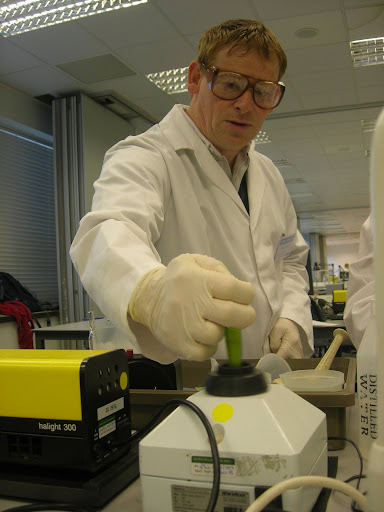Its time to do the second TMA on this course and this one is relatively involved.
The first question is to write up an experiment you have performed, either on calculating the luminosity of the Sun, or on the sidereal day. I chose the former. For this we had to compare on a sunny day the output of a 150W lightbulb with the sun using a piece of paper with an oil spot on it. You move the paper in between the sun and the bulb until the oil spot is not visible anymore - then you have similar luminosity values. Unfortunately 150W lightbulbs are pretty much phased out especially the clear ones that are required and 100W clear are hard to find but I did managed to find a 100W clear eventually. I ended up with about 1/3 of the accepted value for the luminosity of the Sun, which considering there was some very hazy high level cloud around, and it was early in the year (and I was using 100W bulb) I didn't think was too bad. I've learnt not to expect too much from physics experiments without doing a fearsome amount of work.
This question is worth 40% of the marks. It means of course you have to do the experiment first, and then write it up using the appropriate section headings, titles, abstracts and stuff like that. It requires analysis of data, error calculations and how the experiment could be improved and so on.
Question 2 is another relentless one. Its split into 3 sub-questions on parallax measurement, doppler measurements and some planisphere work to work out rising and setting times. Each sub question is made up of 3 to 5 parts, so that's 11 questions you have to answer, for 24% of the marks.
Question 3 is similarly made up of 3 subsections on spectral classification, spectral measurement and magnitudes. Its again 11 questions in all and is again 24%.
Question 4 is about dust clouds and collapse to form suns. Three sub parts again looking at collapse conditions, Hertzsprung-Russell diagrams for forming clouds, and finally a wild card on detection of planets orbiting other suns. Only 7 questions in total to answer here for your 12%.
skip to main |
skip to sidebar

Life studying for a 2nd time around with the Open University and others.
My Latest Blip
About Me
Topics
- A251 (7)
- astronomy (1)
- CMA (4)
- coursera (8)
- courses (40)
- degree (1)
- ECA (2)
- exam (7)
- experiment (3)
- G+C (7)
- html (1)
- intro (1)
- java (1)
- quantum mechanics (1)
- residential (43)
- S103 (19)
- S170 (1)
- S171 (1)
- S193 (1)
- S194 (4)
- S196 (1)
- S204 (21)
- s205 (18)
- S282 (17)
- s283 (8)
- S320 (12)
- S366 (11)
- S377 (10)
- SD329 (9)
- sk195 (2)
- sxr103 (3)
- SXR208 (9)
- sxr270 (7)
- sxr270tutor (7)
- SXR375 (9)
- SXR376 (8)
- TMA (49)
- tutorial (4)
- udemy (3)




No comments:
Post a Comment